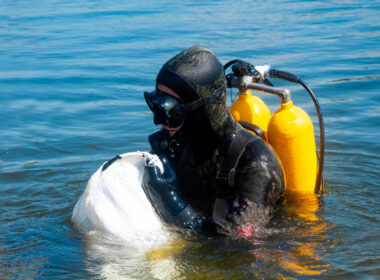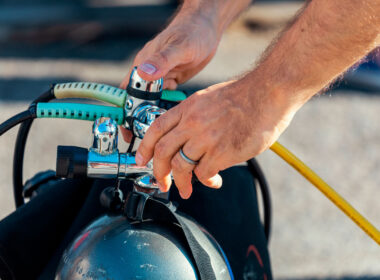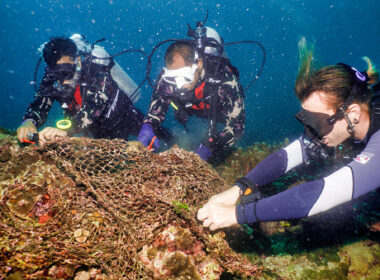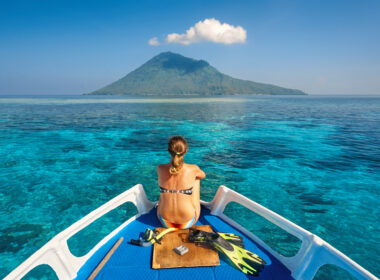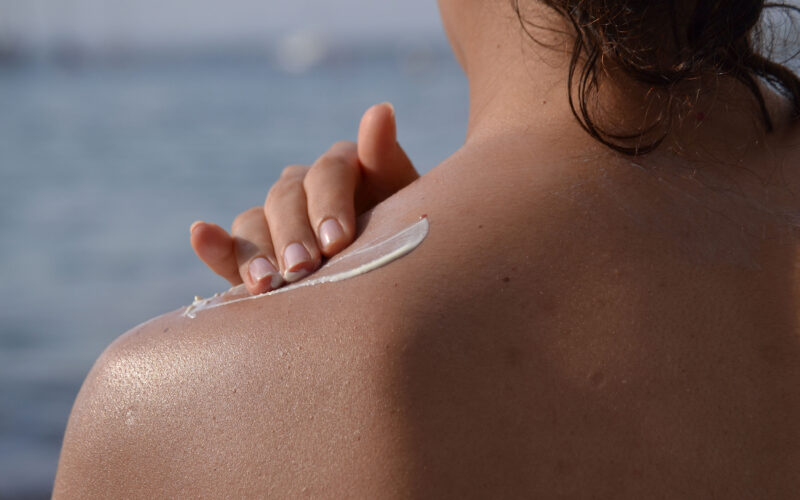Did you know that most store-bought sunscreens are detrimental to the health of our coral reefs, not to mention ourselves?
The typical store-bought sunscreen contains chemicals such as oxybenzone, octinoxate, octisalate, octocrylene, homosalate and avobenzone which have been proven to cause hormone disruption, as well as, reproductive and developmental toxicity in humans. They are also known to disrupt coral behavior and damage their DNA, which ultimately leads to coral bleaching and is detrimental to the health of our reefs.
Let’s take a look and see if plastic-free sunscreen really exists.
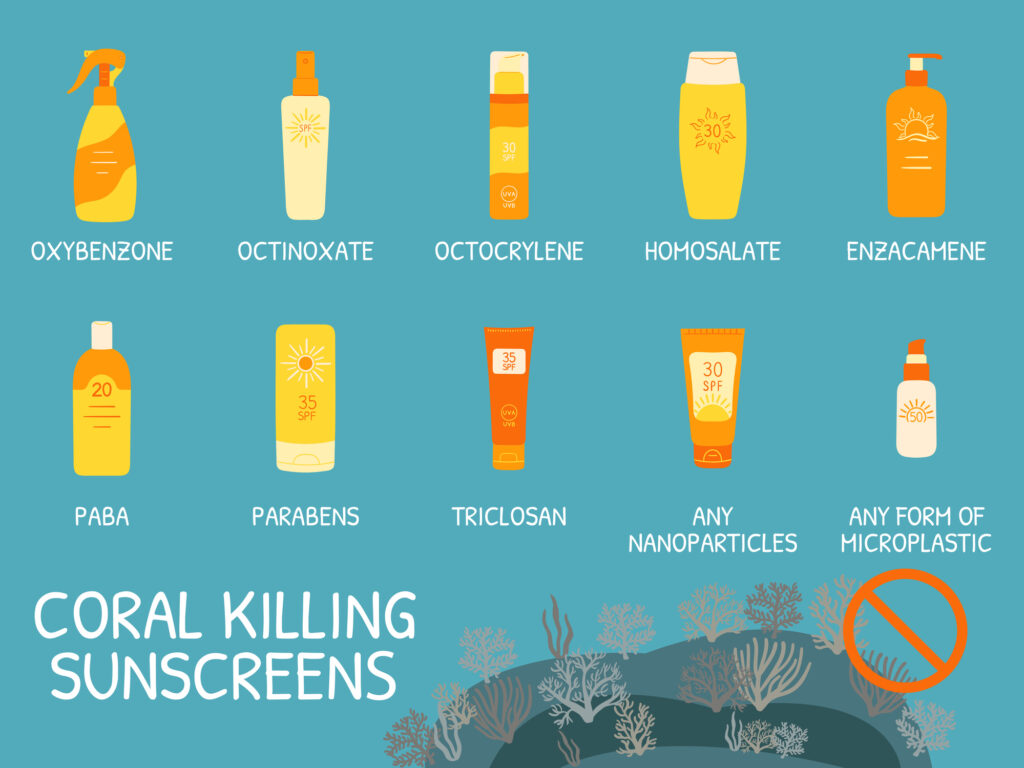
So Do Plastic-Free Sunscreens and Reef-Safe Sunscreens Exist?
The short answer is “Yes”, there are plastic-free and reef-safe sunscreens available in the market. These sunscreens are formulated to be environmentally friendly, free from harmful chemicals that can damage coral reefs, and packaged in plastic-free or recyclable packaging. The problem is knowing which ones are truly reef-safe as there is no standard to the reef-safe / ocean- friendly labelling and any company can decide to use it when often just removing one of the many harmful chemicals. The safest buy is to stick to zinc oxide or titanium dioxide mineral sunscreens and purchase blocks or creams avoiding spray-ons that pollute and also can cause you harm due to possible inhaled particles.
For more information read more about Reef-Safe sunscreens from our partners at Green Fins.
What is the Benefit of a Plastic-Free / Reef-Safe Sunscreen?
Reef-safe sunscreens are designed to minimize the impact on coral reefs and marine life. Traditional sunscreens often contain chemicals like oxybenzone and octinoxate, which are harmful to coral reefs and can contribute to coral bleaching. Reef-safe sunscreens avoid these chemicals and instead use mineral-based ingredients like zinc oxide or titanium dioxide as UV filters.
Plastic-free sunscreens are those that come in packaging that is free from plastic or made from biodegradable or recyclable materials. Instead of plastic bottles or tubes, they may use materials like metal tins, cardboard, or compostable materials.
As mentioned before, the terms “reef-safe” and “plastic-free” are not regulated, so it’s essential to read the ingredients and packaging labels to verify the claims. Check if the packaging is labeled as plastic-free, recyclable, or made from biodegradable materials.
Discover 10 ways to support the health of our ocean here.
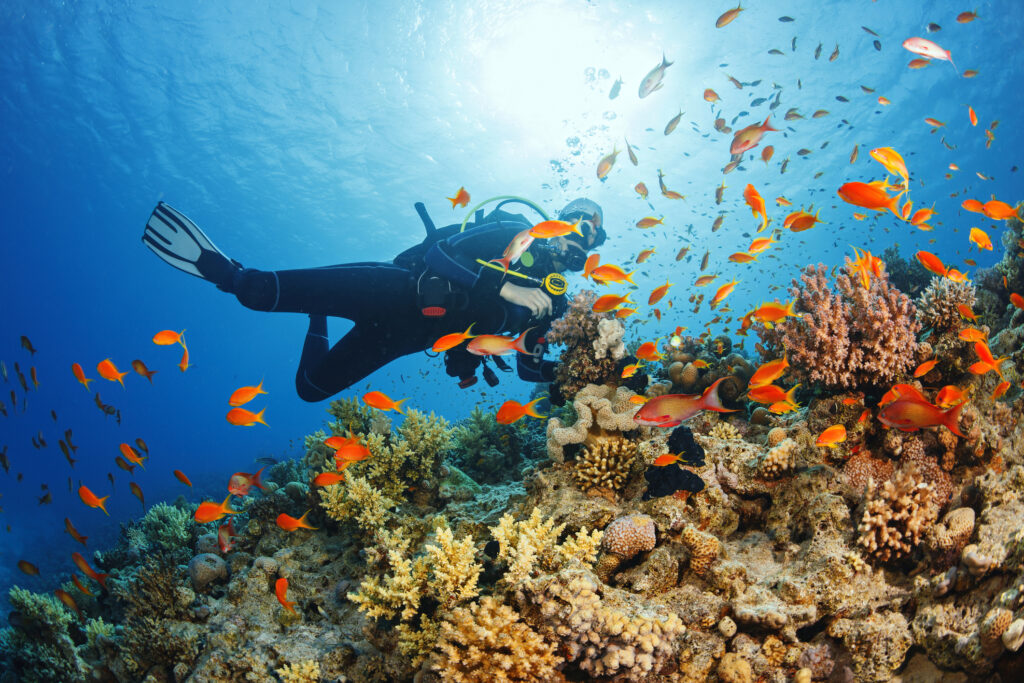
What to Look Out For?
When purchasing sunscreen, consider looking for reputable brands that have made commitments to sustainability. You can do your research online. Some large, well-known cosmetic brands, have a “reef-safe” version of their sunscreen, but it can still contain many harmful chemicals and it is often an unregulated label used for green-washing without being truly honest with you. You are better off going to a company that ONLY produces reef-safe products and truly cares and commits to the ocean.
Remember to always follow the application instructions and reapply sunscreen as recommended to protect your skin and the environment effectively.
What is the Big Issue with Sunscreen?
It is estimated that 4 to 6 thousand tons of sunscreen enters the ocean every year causing major disruption and pollution to our marine ecosystem and putting our coral reefs and its inhabitants at major risk.
One specific example is oxybenzone (benzophenone-3), which is commonly found in many traditional sunscreens. Oxybenzone has been shown to contribute to coral bleaching, disrupt coral reproduction, and damage coral DNA. It can also accumulate in fish and other marine organisms, posing potential risks to the broader marine ecosystem.
Additionally, some chemical sunscreen ingredients have been associated with potential health concerns in humans. These concerns primarily revolve around the absorption of certain chemicals through the skin and their potential hormonal effects. However, more research is needed to fully understand the extent of these risks.
It’s important to note that the information and research on sunscreen ingredients and their effects on coral reefs and human health are continually evolving. Staying informed and being mindful of the products we use can help protect both ourselves and the environment.
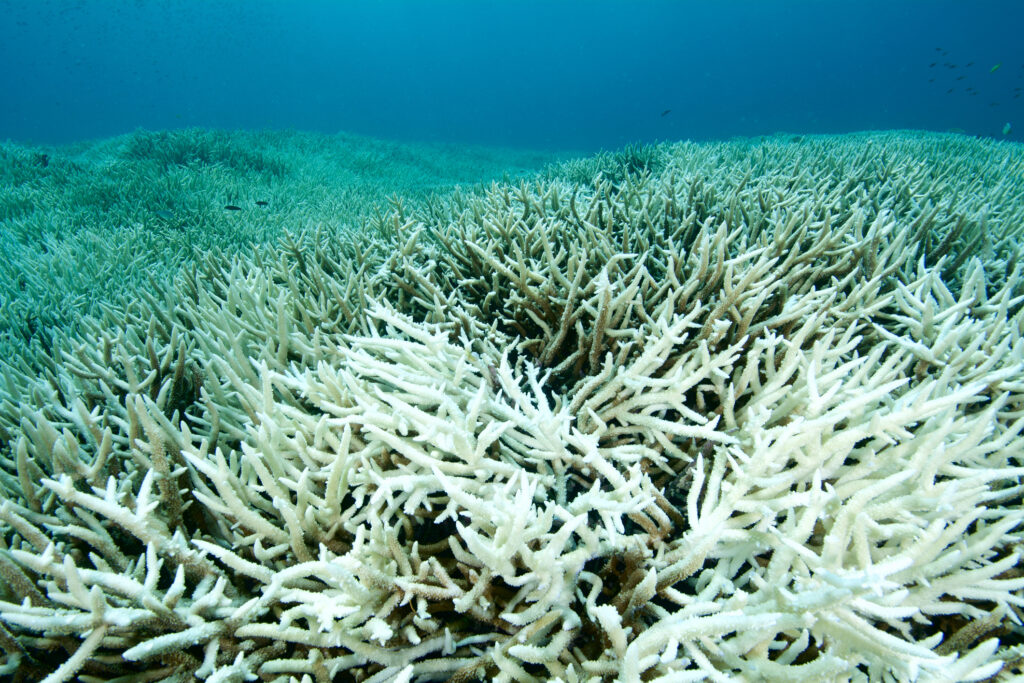
Reef Safe Sunscreens
Luckily, many brands have now turned to producing reef-safe sunscreens or plastic-free sunscreens and cosmetics. A few examples of reputable brands that offer plastic-free and reef-safe sunscreens include:
- Raw Elements: Raw Elements offers a range of reef-safe sunscreens that are made with natural and certified organic ingredients. They come in plastic-free and recyclable metal tins.
- All Good: All Good produces reef-safe sunscreens that are made with mineral-based ingredients and come in recyclable and plastic-free packaging.
- Stream2Sea: Stream2Sea offers a line of reef-safe sunscreens that are biodegradable, tested safe for freshwater and saltwater marine life, and packaged in recyclable tubes made from sugarcane resin.
- Thinksport: Thinksport provides reef-safe sunscreens that are free from harmful chemicals and come in recyclable and plastic-free packaging.
- Avasol: Avasol offers plastic-free and reef-safe sunscreens made with natural ingredients. Their packaging is biodegradable and made from recycled paper and plant-based materials.
- Badger: Badger produces reef-safe sunscreens that are mineral-based and packaged in recyclable and BPA-free plastic or metal tubes.
Remember to verify the product claims and ingredients by reading the labels and conducting your research. It’s also a good practice to check for certifications like the “Reef Safe sunscreen” label or other relevant environmental certifications when choosing a sunscreen brand.
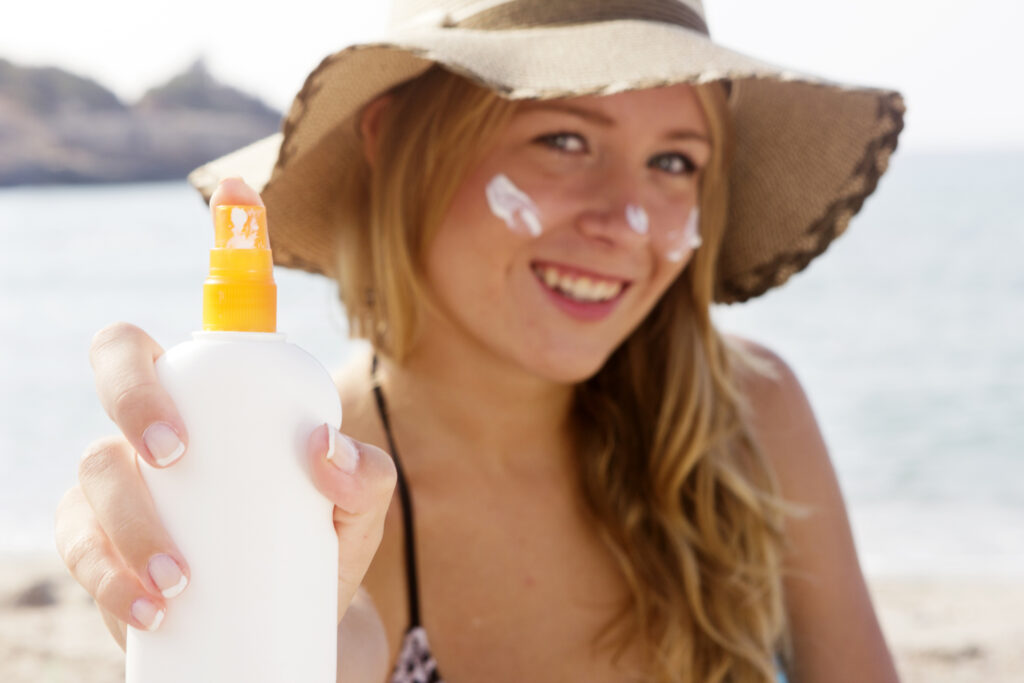
Can I Trust a “Reef Safe” Label?
While a “Reef Safe” sunscreen label can be a helpful indicator, it’s important to approach it with some caution and not solely rely on it as the sole criteria for choosing a sunscreen. The term “Reef Safe” is not regulated by a universal standard, which means there is no consistent definition or certification process that applies to all products using this label.
To determine if a sunscreen is truly reef safe, it’s recommended to consider the following factors:
- Read the Ingredient List: Look for sunscreens that explicitly state they are free from oxybenzone and octinoxate, as these chemicals have been linked to coral reef damage. Instead, opt for sunscreens with mineral-based ingredients like zinc oxide or titanium dioxide. Additionally, avoid those that have “Perfume” in the ingredients or are scented as this is an unnecessary toxin that enters your body and also causes the product to expire.
- Check for Third-Party Certifications: Some sunscreen brands undergo testing and certification from reputable organizations. Look for certifications like “Reef Safe sunscreen,” “Reef Friendly,” or similar labels from recognized third-party entities. While not all reef-safe sunscreens have certifications, they can provide an added level of assurance.
- Do Additional Research: Take the time to research the brand and read reviews or articles from trusted sources. Look for brands that commit to sustainability, environmental responsibility, and transparency.
- Consider Packaging: While the focus is primarily on the formulation of the sunscreen, also consider the packaging. Look for sunscreens that are packaged in recyclable materials or plastic-free alternatives.
By combining these steps and considering multiple aspects, you can make a more informed decision when choosing a sunscreen that is both safe for you and environmentally friendly.
Cover up – The Best Sunscreen Protection For You and the Environment
Covering up with appropriate clothing is indeed one of the most effective and environmentally friendly ways to protect yourself from the sun’s harmful rays. Here are some tips for utilizing clothing as sun protection:
- Wear Protective Clothing: Opt for clothing that covers as much skin as possible. Choose lightweight, tightly woven fabrics that provide better sun protection. Dark or bright colors tend to offer more protection than lighter shades.
- Use Sun Hats: Wear wide-brimmed hats that shade your face, neck, and ears. Hats with a brim all around, such as a floppy sun hat or a legionnaire-style cap, provide better protection.
- Sunglasses: Protect your eyes and the delicate skin around them by wearing sunglasses with UV protection. Look for sunglasses labeled with 100% UV protection or UV400.
- Seek Shade: When the sun is strongest, usually between 10 a.m. and 4 p.m., try to stay in the shade as much as possible, especially if you’re in direct sunlight for extended periods.
- Plan Activities Wisely: Consider scheduling outdoor activities in the early morning or late afternoon when the sun is less intense.
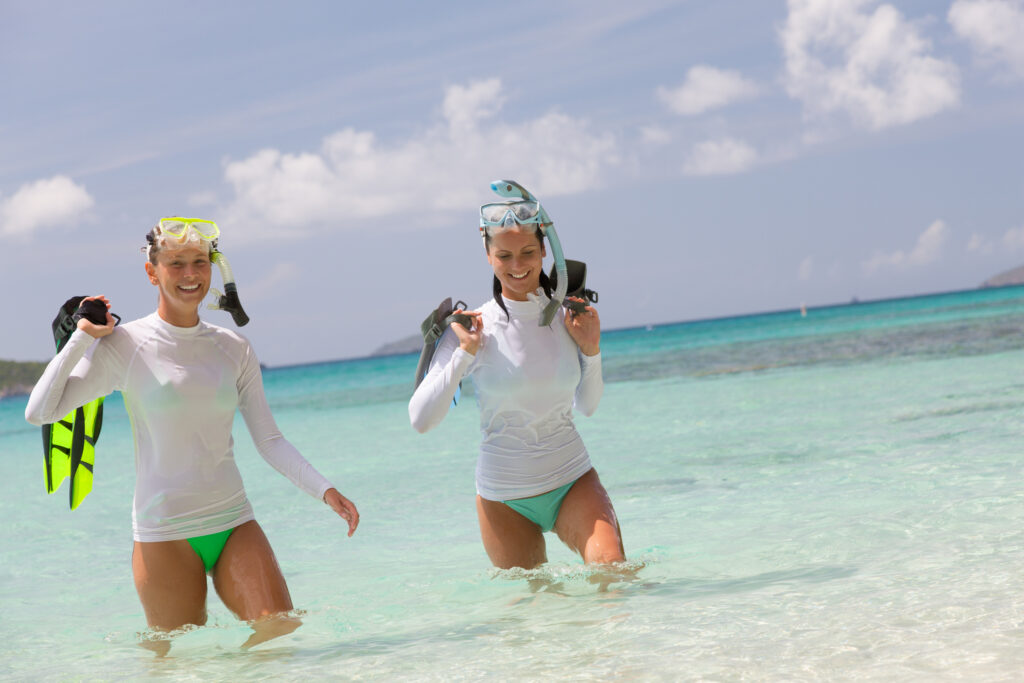
While covering up with clothing is effective, it’s still important to apply sunscreen to exposed skin, especially when clothing alone isn’t enough to provide adequate coverage. When selecting a sunscreen, opt for reef-safe and broad-spectrum options with mineral-based ingredients like zinc oxide or titanium dioxide.
By combining these sun protection measures, such as covering up with clothing, wearing a hat and sunglasses, seeking shade, and using sunscreen when necessary, you can minimize the risk of sun damage to yourself, as well as, damage to the environment.
If you want to find out more information about sunscreen and its affects to the Ocean as well as how you can be a green diver, check out our partners at Green Fins


